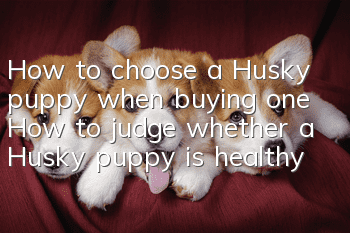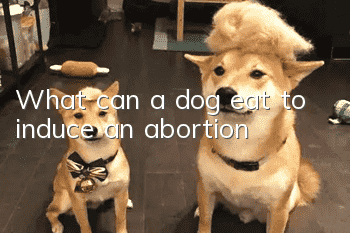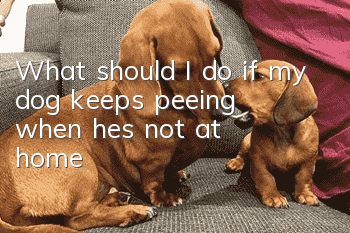How to choose a Husky puppy when buying one? How to judge whether a Husky puppy is healthy?

1. Observe the Husky’s eyes:
As the saying goes, “The eyes are the windows to the soul,” the same applies to Husky puppies. A healthy baby should have bright and energetic eyes, clean and neat eyelashes, and slightly moist eye rims. It is not normal if your Husky puppy’s eyes are red (flushing with blood) or beige (yellowing of the conjunctiva).
If the conjunctiva of a husky puppy's eyes is red, it is likely to be a sign of some infectious diseases or thermal diseases; if the conjunctiva of a puppy's eyes is yellow, it may be a liver problem; if the cornea appears blue-gray, it is likely to be a disease. Infectious hepatitis (this phenomenon is also called "hepatitis blue eye" clinically).
Special attention should be paid to the turbidity of the Husky's cornea (the outermost layer of the eyeball) or white spots. If the Husky puppy has a lot of eye feces in addition to the above symptoms, special attention should be paid to it! Because this may be a symptom of canine distemper in the middle and late stages. Canine distemper is one of the most dangerous diseases for dogs, with a very high mortality rate.
Summary: A healthy Husky puppy should have bright eyes, flexible ears and tail, and should respond quickly when someone approaches, showing active approach or avoidance. If your eyes are dull and you are depressed, you are more likely to get sick. If this is a puppy, don’t choose it.
2. Observe the Husky’s body shape:
A healthy Husky puppy should often have the best physical development, so generally well-developed dogs will also have a very strong body shape. Therefore, we can pay attention to whether the Husky puppies' movements are flexible, whether the coat is neat and smooth, whether the muscles are plump and well-proportioned, whether the limbs are symmetrical and strong, and whether there is lameness.
If there are obvious scars, pimples, hair loss, and papules (small bumps) on the body surface, it means that the dog has or has suffered from skin diseases.
At the same time, one thing to note is to look at the lower abdomen of the Husky puppy. People who buy a dog for the first time or who don’t know much about dogs often overlook this point. If there are obvious spherical bulges around the navel and back of the dog's abdomen, it is mostly the result of the dog suffering from umbilical hernia or scrotal hernia, which generally requires surgery.
3. Observe the Husky’s nose:
In the selection of Huskies, the Husky’s nose is a very important part. The tip of the nose and around the nostrils of a healthy Husky puppy should be moist and cool.
If the nose is dry, it often indicates inflammation of the upper respiratory tract (mostly caused by infectious diseases and febrile diseases). For example, if there is obvious serous, mucus, or purulent nasal discharge from the nostrils, it is a manifestation of some infectious diseases (influenza, canine distemper, etc.).
- What are the causes of vomiting and diarrhea in dogs? Find the cause and prescribe the right medicine!
- Dog keeps coughing and foaming as if stuck
- How to train a Corgi to sit for a long time? The correct way to train a Corgi!
- What are the characteristics of German Shepherd dogs?
- How to deal with bad breath in Scottish Sheepdogs
- How to give deworming medicine to puppies regularly?
- First aid measures for dog burns
- How to treat diarrhea in Doberman Pinscher?
- Causes and treatments for vomiting in Miniature Schnauzers
- Causes and treatments for diarrhea in dogs



